EU-27 poultry market update
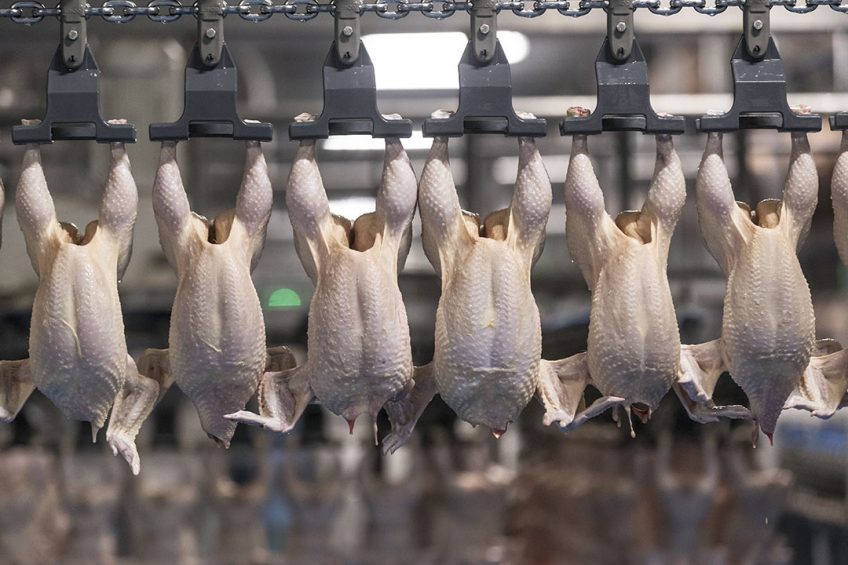
After years of growth, EU-27 chicken meat sector is expected to contract moderately in 2020 before rebounding in 2021, although at a slower growth rate than pre-Covid. Further development of non-conventional production schemes (organic, free-range and GMO-free chickens) remains strong.
After years of growth, EU-27* chicken meat production is foreseen to decline by 1.6% in 2020 due to the impact of the Covid-19 pandemic that led to a lockdown in most EU-27 countries and the temporary closure of hotels, restaurants and institutional cafeterias (HRI). While chicken meat demand was less affected than other meats, the loss of meals taken outside the home was not fully replaced by purchases of chicken for at-home consumption.
In most EU-27 countries, chicken meat slaughterhouses and processors had to switch from bulk sales to the HRI sector to sales to the retail sector for household purchases. Most EU-27 countries, therefore, show decreases in production in 2020, except for Germany where at-home consumption remained strong, despite pressure on production due to welfare and environmental issues that hamper the instalment of new poultry farms and the enlargement of existing ones.
Poland particularly impacted by HPAI and Covid-19
Poland is the largest EU-27 chicken producer with close to 20% of all EU-27 chicken production. However, several cases of HPAI were reported in 2019 and 2020 in Bulgaria and Poland, leading several countries – South Africa, China, South Korea, Singapore, Japan, Taiwan, the UAE, and the Philippines – to ban Polish poultry and egg products. Based on Poland’s regionalisation plan, Polish poultry imports were restricted by Ukraine, Belarus, Hong Kong, Kazakhstan, Russia, Armenia, Cuba, and Saudi Arabia.
 5 top actions to prepare for winter avian flu
5 top actions to prepare for winter avian flu
Due to fears about the possible spread of bird flu by migrating birds from Russia and Kazakhstan, UK Chief Veterinary Officers have taken action.
Furthermore, Poland was particularly impacted by the closure of the HRI sector in many EU-27 member states. Prior to the Covid-19 outbreak, the growth in Polish chicken production was primarily export-driven with close to 50% of its production exported, and most of those exports to other EU-27 member states went to the HRI sector. Additionally, the ban on the export of Polish chicken to many third countries due to its HPAI outbreak led to sharply increased domestic meat stocks, which translated into lower farm-gate prices (fell 9% between March to July 2020, and 10% compared to July 2019).
France – domestic demand remains strong
Over the past 7 years, France’s chicken meat production has stalled because of declining exports and competition from other EU-27 suppliers. The lockdown reduced consumer demand for chicken meat, but the French domestic retail market for chicken remained strong, as households prefer purchasing domestically produced chicken.
 Interview: FVE president: “One Health approach is essential”
Interview: FVE president: “One Health approach is essential”
Dutch veterinarian Rens van Dobbenburgh has been president of the Federation of Veterinarians of Europe (FVE) since June 2019. Poultry World caught up with him to talk about the role of FVE and the challenges to be faced.
Spanish poultry meat sector restructures
Due to the temporary closure of the HRI sector and loss of tourists, the drop in Spanish chicken exports to the EU-27, and the contraction of household consumption, Spanish chicken production will fall by 5% in 2020. This situation, combined with significantly lower prices (down 15% in April 2020) led the Spanish poultry association to request Private Storage Aid from the EU Commission, but it was rejected. It is expected that in 2021, chicken production will return to its 2019 level. Meanwhile, the Spanish chicken meat sector, which has been restructuring towards the manufacturing of value-added chicken products, reportedly plans are to increase poultry export markets outside the EU-27.
Many changes for Dutch poultry sector
Chicken meat production in the Netherlands was impacted by Covid-19, mainly due to lower demand in other EU markets, such as the UK, and increasing competition from Poland. After a 3% decline in 2020, production growth is forecast to increase again in 2021. However, the increase will be limited by the availability of animal production licenses based on the volume of phosphate produced by the birds. The change to more sustainable production methods and better animal welfare conditions (thus reducing the size of the flock) is also limiting the production growth. It remains to be seen what the effect will be of the closure (1 October 2020) of the large slaughterhouse, Frisia, that slaughters 500,000 birds per week of a total Dutch slaughter of 12 million per week. Its competitor, Plukon, is planning to take over the production, while the potential oversupply of birds is creating downward pressure on prices.
Increase in UK retail chicken consumption
While the UK experienced an effective loss of the hospitality sector in March 2020, there has been a significant increase in retail consumption of chicken. Additionally, the take-out/delivery market for restaurants dramatically increased during the pandemic, so much so that the sector scaled up to address demand. The UK increased exports to the Netherlands and Belgium primarily due to the devaluation of the UK pound.
 2 Sisters Food Group publishes Animal Welfare Strategy
2 Sisters Food Group publishes Animal Welfare Strategy
One of the UK’s largest poultry businesses, 2 Sisters, has published an updated Animal Welfare Strategy to demonstrate its ongoing commitment to higher standards.
Overall chicken demand likely to recover
Although at slower growth than before the Covid-19 pandemic, it is forecast that the demand for and production of chicken meat will resume in 2021 as a result of a preference for cheaper protein sources, such as chicken, due to the unfavourable economic situation across most of Europe.
The lockdown and closure of HRI outlets for several months in most EU-27 countries lowered the demand for cheap chicken parts popular with restaurants which were supplied by imports. Both imports from Brazil and Thailand will be down in 2020. It is anticipated that in 2021, providing no further lockdown impacts the HRI sector, import demand will resume close to its pre-Covid-19 level. The decline in exports in 2020 was due to the pandemic, and the ban on Polish chicken meat by several key customers of EU-27 chicken meat due to HPAI outbreaks in Poland. EU-27 exports are projected to resume their growth in 2021, fueled by demand for cheap chicken parts from Asia and Sub-Saharan Africa.
Global appetite for EU-27 chicken meat
The decline of EU-27 chicken meat exports, as a result of the Covid-19 pandemic, follows years of growth driven by the growing global appetite for EU-27 sourced chicken meat parts. This growth is mainly due to increasing exports of price-competitive bone-in parts (legs, wings) and mechanically deboned chicken meat from the EU-27. European exporters can lower the prices for those dark meat cuts as they get a better price in domestic EU-27 markets for more expensive breast cuts and white meat. The overall decline in exports hides strong export flows of frozen low-priced chicken meat cuts to the Philippines as well as to some Sub-Saharan African countries such as Ghana and the Democratic Republic of Congo. Cuba and Angola are anticipated to become growing markets for EU-27 chicken parts in the future. Furthermore, EU-27 exports of frozen cuts to Hong Kong are expected to remain strong in 2020, fueled by consumer demand despite the competition from other sources, primarily Thailand and Brazil.
 Changing role for poultry meat in Europe
Changing role for poultry meat in Europe
Academics and industry leaders are to come together in the autumn to discuss the role of poultry meat as part of the European Union’s Farm to Fork (F2F) Strategy.
EU-27 exports face competition from the US
EU-27 chicken meat exports to South Africa are anticipated to decline sharply in 2020, a decrease fueled by the ban on Polish chicken meat due to HPAI outbreaks (Poland regained its HPAI-free status on 13 August 2020) and the lockdown. The Netherlands obtained HPAI-free status in early 2020, but South Africa imports of Dutch chicken meat remained low in the first 6 months of 2020. Limited sales of Dutch and other EU member state chicken meat sales to South Africa are partially because EU-27 chicken meat faces strong competition from US chicken meat exports to South Africa that have been growing since 2016 when the United States gained market access.
Domestic consumption
Total meat consumption in the EU-27 has been negatively impacted by the lockdown, but chicken meat was less affected than beef and pork. The growth in chicken meat consumption is expected to resume with the anticipated 2021 economic recovery. In several EU-27 countries, such as Germany, France and Poland, the shift to chicken meat has also increased due to the belief that it is a healthier and leaner meat, and because it is more convenient to prepare. It is also considered easier to prepare for catering and restaurant use than other meats.
Consumer demand in most EU-27 countries is increasing for organically-produced chicken, GMO-free chicken, and for cage-free and free-range chickens. In France, for example, the free-range sector represents about 10% of total consumption, but public relations campaigns by animal rights organisations are boosting the development of non-conventional chicken production schemes. The growth of these production methods is also significant in the Netherlands, Germany and Austria despite retail prices that are up to double the price of conventional chicken. Demand for locally-sourced chicken is also increasing. This is particularly the case in Austria with retailers advertising local and regional suppliers.
The information in this article has been extracted from a USDA GAINS report prepared by Xavier Audran.
Join 31,000+ subscribers
Subscribe to our newsletter to stay updated about all the need-to-know content in the poultry sector, three times a week. Beheer
Beheer

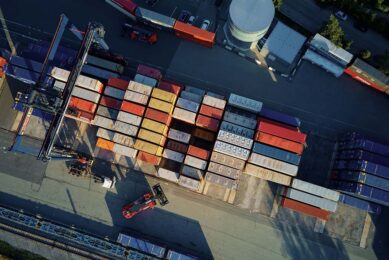
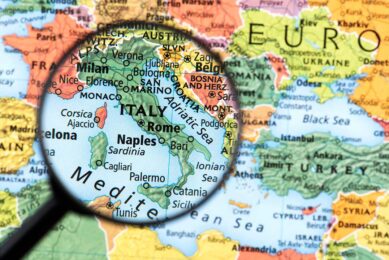
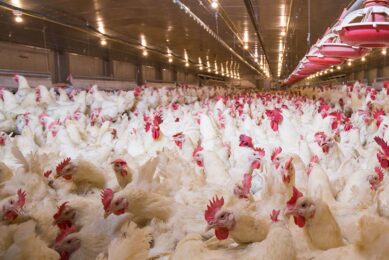
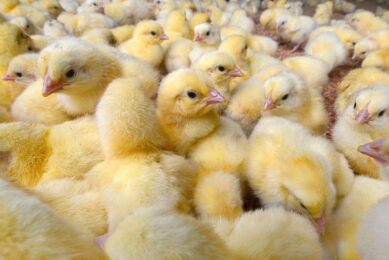



 WP Admin
WP Admin  Bewerk bericht
Bewerk bericht